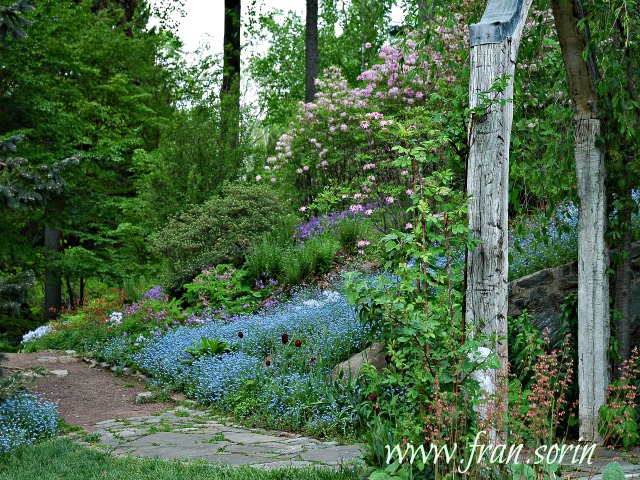The red in the foreground is the native Rock Penstemon, Penstemon baccharifolius, which I cut back early this spring. It's another red flower I have come to love and a favorite of there humming bird. It absolutely demands dry calcarious soils which is just what it gets in the sunken garden. No amendments necessary.
Another pretty red annual is the scarlet flax, Linum grandiflorum, seen here with coreopsis and gulf coast penstemon.
Last year there was a lamb's ear plant about 6 feet away from here which withered during the summer. This one seeded here and grew over the winter and I hope some of its seeds will find a happy place to grow.
There are sprinklings of this coreopsis in just about every garden I have. The original was from a packet of seeds planted nearly 20 years ago. It does get a little tall and floppy so I had to stake it up.
Keeping the trailing winecup, Callirhoe involucrata, under control is not easy. It will run across the paving as well as climb as much as 4' among taller plants.
Square-bud primrose, Calylophus berlandieri, with a few seed heads of Nigella and one of two stragglers.
There are several dwarf day lilies including these two which do well along the edges of the rocks.
And scabiosa, which blooms all through summer and even during a mild winter.
And the common mullein, Verbascum thapsus, of which there are 5 in the sunken garden, is just beginning to flower. It is an invasive species having been introduced from Europe.
It gives me great pleasure to walk out there in the morning and see the new blooms of the day. Any yes it is constant work and will they all be there next year-probably because I just love them too much not to allow them to seed.
And who will be up next? The gauras, coneflowers, small flowering coreopsis and the prickly pear cactus.
And who will be up next? The gauras, coneflowers, small flowering coreopsis and the prickly pear cactus.
















































































